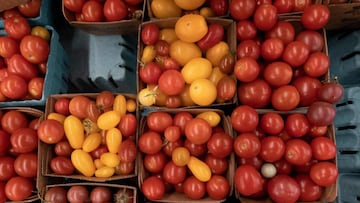Food stamps for families: who is eligible for SNAP benefits?
The United States Department of Agriculture has announced a historic increase in the value of SNAP benefits. Are you are eligible? Check out our guide


This week the US Department of Agriculture (USDA) announced an increase in the value of food stamps, or Supplemental Nutrition Assistance Program (SNAP) benefits as they are formally known.
The enhanced benefit, which equals about $36.24 per person per month, can be expected starting 1 October 2021.
The Biden administration approved the largest-ever single increase to SNAP benefits — what amounts to an extra $36.24 per month, per person.https://t.co/aZkNziSsMz
— NPR (@NPR) August 17, 2021
Who is eligible for SNAP benefits?
SNAP eligibility depends on household income. The Department of Agriculture (USDA) oversees the program, but the actual distribution is done at the state level, and those entities approve SNAP applications.
The USDA has put together a tool that allows residents of all states and territories to find the agency tasked with distributing SNAP benefits. States are allowed to establish their own requirements. However, the federal government has outlined three high-level conditions that state agencies must comply with.
Gross Monthly Income
To receive snap benefits, households must be equal to or lower than 130% of the poverty line. In 2019, the Center on Budget and Policy Priorities (CBPP) found that this would be an average of around “$2,252 a month (about $27,020 a year) for a three-person family.” However, those applying who live in households with a senior citizen, or someone with a disability, can surpass these income thresholds.
Net Monthly Income
Like the Gross Monthly Income requirement, the USDA stipulates that a household must have a net income below equal to or below the poverty line.
Household Assets
There are limits on the value of the assets held by the applicant. According to the CBPP, In 2019, the limits were "$2,250 for households without an elderly or disabled member and $3,500 for those with an elderly or disabled member."
Any resources that could be available to the household to purchase food are counted as assets. Savings or cash in bank accounts count as assets, for instance. Items that are not accessible, such as your home, personal property and retirement savings, do not count. Most automobiles do not count.
Source: AS English
A brief history of SNAP benefits
The SNAP program was enacted in 1933, under Presidnet Rosevelt, under the Agricultural Adjustment Act. As the country grappled with hunger and extreme poverty during the Great Depression, SNAP initially allowed the Federal government to buy "basic farm commodities at discount prices and distributed them among hunger relief agencies."
In 1939, Secretary of Agriculture Henry Wallace made changes to the program to facilitate distribution by cutting out local organizations. Through the program, families were able to purchase food stamp booklets that cost $1, and "For every $1 in orange stamps that were purchased, an additional $0.50 of blue stamps were given to participants."
Smaller reforms took place over the next few decades, but major changes to the program's structure were passed under the Food Stamp Act of 1977. The benefits were distributed directly to families, and states created their own SNAP agencies to support low-income households more effectively.
The "Welfare Queen" -- what does it mean, and where did it come from?
Presidnet Ronald Reagan made significant cuts to SNAP while popularizing incorrect and racist stereotypes of "welfare queens" taking advantage of the system. This political rhetoric ended up limiting the benefit to women of color, specifically Black single mothers.
These racist stereotypes had lasting impacts on "welfare legislation." In 1996, under President Bill Clinton, the Temporary Assitance for Needy Families (TANF) program was established. The program's legislation set limitations to reduce the chance of benefits going to the villainized welfare queen.
Related stories
However, the welfare queen was an invention, a rhetorical phase used to sway public opinion against welfare programs. The measures included under TANF may have been enacted to save public money, but is also created barriers for families who really needed the money to receive it. And in some cases, they actually wasted government funds.
For example, to receive TANF benefits, many states passed a law mandating that the applicant must pass a drug test. In one of the fifteen states, Missouri, a total of $336,297 was spent "to identify a mere 48 positive tests among nearly 40,000 TANF recipients."